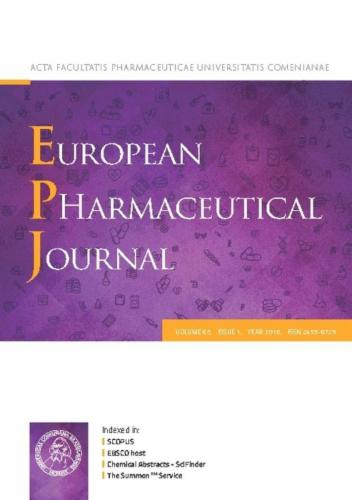Explainable artificial neural network as a soft sensor to predict the moisture content in a continuous granulation line
IF 4.7
3区 医学
Q1 PHARMACOLOGY & PHARMACY
引用次数: 0
Abstract
The application of artificial neural networks (ANNs) has the potential to fundamentally change the pharmaceutical industry, making manufacturing more agile, robust, efficient and reliable. Although ANNs’ application as data-driven soft sensors has a particular potential, the black-box nature of most models creates mistrust and prevents their widespread application. Therefore, this study focuses on the development of an explainable ANN used as a soft sensor to monitor an integrated, continuous manufacturing process based on twin-screw granulation. Our goal was to estimate the moisture content, a critical quality attribute of granules only based on the applied process parameters without any direct measurements. Two separate ANNs – a multilayer perceptron (MLP) and a Nonlinear Autoregressive with Exogenous Inputs (NARX) – were built and compared with a near-infrared (NIR) spectra-based method. The validation of the methods – carried out by performing off-line loss-on-drying measurements – revealed that the accuracy of the ANNs and the NIR models was comparable, and the moisture content could be determined with a root mean square error of prediction below 1 % in all cases. Additionally, the explainability of an MLP was also investigated by SHAP analysis, revealing which parameters impacted the prediction and strength of their impact, making the technology transparent and providing valuable insight into the model. This study highlights the potential of ANNs applied as data-driven soft sensors, offering a viable, orthogonal alternative to traditional analytical methods that is cost-efficient and enhances process understanding.

可解释的人工神经网络作为软传感器来预测连续造粒线中的水分含量。
人工神经网络(ANNs)的应用有可能从根本上改变制药行业,使制造更加敏捷、稳健、高效和可靠。尽管人工神经网络作为数据驱动的软传感器的应用具有特殊的潜力,但大多数模型的黑箱性质造成了不信任,并阻碍了它们的广泛应用。因此,本研究的重点是开发一种可解释的人工神经网络,作为软传感器来监测基于双螺杆造粒的集成连续制造过程。我们的目标是仅根据应用的工艺参数估算颗粒的水分含量,这是一个关键的质量属性,而无需任何直接测量。构建了两个独立的人工神经网络——多层感知器(MLP)和带有外源输入的非线性自回归(NARX)——并与基于近红外(NIR)光谱的方法进行了比较。对这些方法的验证——通过进行离线干燥损失测量——表明人工神经网络和近红外模型的准确性是相当的,并且在所有情况下,水分含量的预测均方根误差都低于1%。此外,还通过SHAP分析研究了MLP的可解释性,揭示了哪些参数影响预测及其影响强度,使技术透明,并为模型提供了有价值的见解。这项研究强调了人工神经网络作为数据驱动软传感器的潜力,为传统的分析方法提供了一种可行的、正交的替代方法,这种方法具有成本效益,并增强了对过程的理解。
本文章由计算机程序翻译,如有差异,请以英文原文为准。
求助全文
约1分钟内获得全文
求助全文
来源期刊
CiteScore
9.60
自引率
2.20%
发文量
248
审稿时长
50 days
期刊介绍:
The journal publishes research articles, review articles and scientific commentaries on all aspects of the pharmaceutical sciences with emphasis on conceptual novelty and scientific quality. The Editors welcome articles in this multidisciplinary field, with a focus on topics relevant for drug discovery and development.
More specifically, the Journal publishes reports on medicinal chemistry, pharmacology, drug absorption and metabolism, pharmacokinetics and pharmacodynamics, pharmaceutical and biomedical analysis, drug delivery (including gene delivery), drug targeting, pharmaceutical technology, pharmaceutical biotechnology and clinical drug evaluation. The journal will typically not give priority to manuscripts focusing primarily on organic synthesis, natural products, adaptation of analytical approaches, or discussions pertaining to drug policy making.
Scientific commentaries and review articles are generally by invitation only or by consent of the Editors. Proceedings of scientific meetings may be published as special issues or supplements to the Journal.

 求助内容:
求助内容: 应助结果提醒方式:
应助结果提醒方式:


